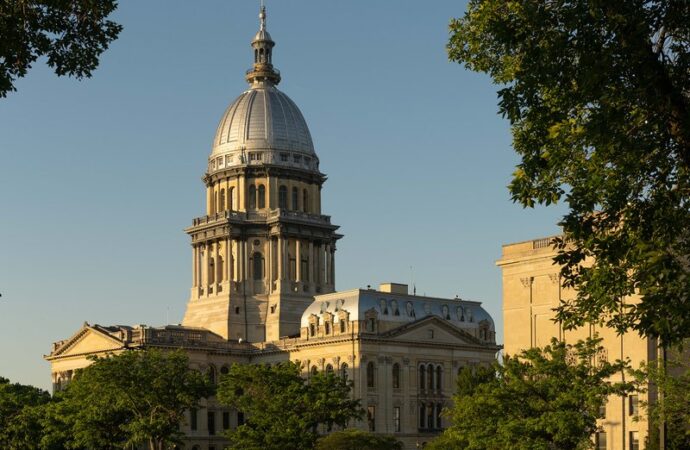As of June, nearly 1 of every 2 Illinoisans who lost a job due to COVID-19 were still not back at work, and the number of employed Black Illinoisans was still declining. Amid the national employment recovery, the employment-to-population ratio of Black Illinoisans fell from June 2020 to June 2021, according to the monthly Current
As of June, nearly 1 of every 2 Illinoisans who lost a job due to COVID-19 were still not back at work, and the number of employed Black Illinoisans was still declining.
Amid the national employment recovery, the employment-to-population ratio of Black Illinoisans fell from June 2020 to June 2021, according to the monthly Current Population Survey. The decline in employment is entirely concentrated among Black workers without a college degree.
A deeper dive reveals labor force participation of Black non-Hispanic and Hispanic women without a college degree has fallen drastically.
At the start of the COVID-19 pandemic, labor economists correctly predicted a L-shaped recovery. That’s because workers most affected by the pandemic—those with fewer available options in the labor market—often take years to find stable employment.
Unfortunately, bad policy could be exacerbating the problem.
The generosity of federal unemployment programs and the absence of job search requirements helped support struggling families. Yet workers whose unemployment income was larger than their lost earnings may be discouraged from actively looking for work, pushing down labor supply.
Pre-existing racial and gender wage gaps mean Black non-Hispanic and Hispanic women with no college education—who tend to be at the lower end of the wage distribution—would be more likely than other groups to receive benefits that exceeded their lost earnings. According to the Current Population Survey, the labor force participation of Black non-Hispanic and Hispanic women with no college degree declined by 10 percent and 15 percent respectively in the past 12 months.
On the demand side, Illinois lagged the rest of the country before the pandemic, and COVID-19 increased the gap. This is because states with more severe COVID-19 restrictions also faced higher unemployment rates on average during the past year, according to data from the University of Oxford’s COVID-19 Government Response Tracker. While COVID-19 and the state’s mandated business restrictions disproportionately harmed workers in occupations deemed nonessential, they also largely contributed to the slower employment expansion in Illinois.
Data from the most recent American Community Survey shows that before the pandemic, Black Illinoisans who did not possess a college degree were more likely than other groups to be employed in job sectors that saw the biggest pandemic job losses—leisure and hospitality, retail trade, educational and health services. Nearly 81 percent of Black Illinoisans without a college degree were employed in industries that shed 657,700 of the 833,200 total employment decline from January 2020 to April 2020. This is compared to only 76 percent of Hispanics and 69 percent of whites with no college degree.
As of June 2021, these sectors of Illinois’ economy had only regained 55 percent of the pandemic job losses compared to 85 percent in the rest of the country on average. Since May 2020, the rate at which unemployed Americans find work each month exceeds that of unemployed Illinoisans by nearly 18 percent.
More sluggish labor demand in Illinois relative to the rest of the country combined with the absence of job search requirements have contributed to lower employment growth relative to the rest of the country.
While federal stimulus checks to households substantially reduced hardship, getting people back to work is the only sustainable way to help struggling Illinoisans.
While there isn’t much to be done about the uncertainty surrounding COVID-19, Illinois’ policy climate should adjust to promote increases in employment. That starts with getting out of the way of job creators as they try to regain their footing. The expiration of extended unemployment benefits in September should serve to increase labor supply. However, the state should also support workers in gaining the skills needed to be more competitive in a post-COVID economy—that means increased spending on higher education, training programs and apprenticeships without counterproductive demand-reducing tax hikes.
Illinois could do that if the state prioritized those who suffered most during the pandemic, but the latest state budget reveals no increase in state investments in higher education.
Instead, Illinois’ big priority is to spend $11.6 billion, more than 27 percent of the state’s budget, on public employee pensions. The result is heavy investment in past labor, with little available to invest in the future.
Orphe Divounguy is chief economist at the Illinois Policy Institute.



























Leave a Comment
Your email address will not be published. Required fields are marked with *